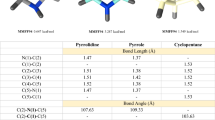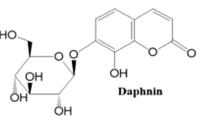Abstract
In this work, we have synthesized various organic compounds possessing 1,3,4-oxadiazole as a core structure and the structure of the newly synthesized target compounds has been revealed using different analytical approaches such as FT-IR, LCMS, and NMR (proton and carbon), respectively. The in vitro carbonic anhydrase potentials of these synthesized 17 different analogues were investigated. The result suggests that compound 7g, a 3-pyridine substituted analogue with an IC50 of 0.1 µM, was found to have the most potent carbonic inhibitory activity (11-fold more active) than the positive control (acetazolamide) with an IC50 of 1.1 ± 0.1 µM. Besides, among the series 7(a–q) approved in the identification of four potent carbonic anhydrase inhibitors with the IC50 standards varies from 0.1 to 1.0 ± 0.1 µM. Additionally, the non-competitive behaviour for potent compound 7g was analysed using the Lineweaver–Burk plot from the kinetic study. Furthermore, the anticancer activity of all the synthesized compounds screened against B16F10 melanoma cells using the MTT assay method. Additionally, the molecular docking studies revealed that 7g inhibitor shows good binding energy as well as good binding interaction pattern along with enzyme.







Similar content being viewed by others
References
Del Prete S, Vullo D, De Luca V et al (2016) Anion inhibition profiles of α-, β- and γ-carbonic anhydrases from the pathogenic bacterium Vibrio cholerae. Bioorg Med Chem 24:3413–3417. https://doi.org/10.1016/j.bmc.2016.05.029
Imtaiyaz Hassan M, Shajee B, Waheed A et al (2013) Structure, function and applications of carbonic anhydrase isozymes. Bioorg Med Chem 21:1570–1582. https://doi.org/10.1016/j.bmc.2012.04.044
Akocak S, Supuran CT (2019) Activation of α-, β-, γ- δ-, ζ- and η- class of carbonic anhydrases with amines and amino acids: a review. J Enzyme Inhib Med Chem 34:1652–1659. https://doi.org/10.1080/14756366.2019.1664501
Nocentini A, Supuran CT, Capasso C (2021) An overview on the recently discovered iota-carbonic anhydrases. J Enzyme Inhib Med Chem 36:1988–1995. https://doi.org/10.1080/14756366.2021.1972995
Abdizadeh R, Ghatreh-Samani K, Hadizadeh F, Abdizadeh T (2021) Structural investigation of isatin-based benzenesulfonamides as carbonic anhydrase isoform IX inhibitors endowed with anticancer activity using molecular modeling approaches. J Mol Struct. https://doi.org/10.1016/j.molstruc.2020.129735
Angeli A, Kartsev V, Petrou A et al (2021) New sulfanilamide derivatives incorporating heterocyclic carboxamide moieties as carbonic anhydrase inhibitors. Pharmaceuticals 14:1–19. https://doi.org/10.3390/ph14080828
Stellenboom N, Hunter R, Caira M et al (2021) Unsymmetrical cysteine disulfides as carbonic anhydrase inhibitors. Russ J Bioorg Chem 47:1020–1027. https://doi.org/10.1134/s1068162021050344
Di Fiore A, Supuran CT, Scaloni A, De Simone G (2020) Human carbonic anhydrases and post-translational modifications: a hidden world possibly affecting protein properties and functions. J Enzyme Inhib Med Chem 35:1450–1461. https://doi.org/10.1080/14756366.2020.1781846
Agarwal T, Singla RK, Garg A (2019) Carbonic anhydrases and their physiological roles. MOL2NET 5:1–10. https://doi.org/10.3390/mol2net-05-06764
Zolfaghari Emameh R, Hosseini SN, Parkkila S (2021) Application of beta and gamma carbonic anhydrase sequences as tools for identification of bacterial contamination in the whole genome sequence of inbred Wuzhishan minipig (Sus scrofa) annotated in databases. Database 2021:1–9. https://doi.org/10.1093/database/baab029
Cardoso JCR, Ferreira V, Zhang X et al (2019) Evolution and diversity of alpha-carbonic anhydrases in the mantle of the Mediterranean mussel (Mytilus galloprovincialis). Sci Rep 9:1–14. https://doi.org/10.1038/s41598-019-46913-2
Altıntop MD, Sever B, Akalın Çiftçi G et al (2017) Synthesis and evaluation of new benzodioxole-based dithiocarbamate derivatives as potential anticancer agents and hCA-I and hCA-II inhibitors. Eur J Med Chem 125:190–196. https://doi.org/10.1016/j.ejmech.2016.09.035
Zaraei SO, Abduelkarem AR, Anbar HS et al (2019) Sulfamates in drug design and discovery: pre-clinical and clinical investigations. Eur J Med Chem 179:257–271. https://doi.org/10.1016/j.ejmech.2019.06.052
Shaabani A, Nazeri MT, Afshari R (2019) 5-Amino-pyrazoles: potent reagents in organic and medicinal synthesis. Springer
Vanjare BD, Mahajan PG, Hassan M et al (2018) Design, synthesis, photophysical properties, biological estimation and molecular docking studies of novel Schiff base derivatives as potential urease inhibitors. J Fluoresc 28:1295–1304. https://doi.org/10.1007/s10895-018-2289-1
Zhao JW, Wu ZH, Guo JW et al (2019) Synthesis and anti-gastric cancer activity evaluation of novel triazole nucleobase analogues containing steroidal/coumarin/quinoline moieties. Eur J Med Chem 181:111520. https://doi.org/10.1016/j.ejmech.2019.07.023
Henary M, Kananda C, Rotolo L et al (2020) Benefits and applications of microwave-assisted synthesis of nitrogen containing heterocycles in medicinal chemistry. RSC Adv 10:14170–14197. https://doi.org/10.1039/d0ra01378a
Litvinov VP (2002) Heteryladamantanes: recent synthetic investigations, biological activity and other aspects of practical use. Khimiya Geterotsiklicheskikh Soedin 38:12–39
Kaur K, Kumar V, Sharma AK, Gupta GK (2014) Isoxazoline containing natural products as anticancer agents: a review. Eur J Med Chem 77:121–133. https://doi.org/10.1016/j.ejmech.2014.02.063
Delost MD, Smith DT, Anderson BJ, Njardarson JT (2018) From oxiranes to oligomers: architectures of U.S. FDA approved pharmaceuticals containing oxygen heterocycles. J Med Chem 61:10996–11020. https://doi.org/10.1021/acs.jmedchem.8b00876
Zhang HZ, Zhao ZL, Zhou CH (2018) Recent advance in oxazole-based medicinal chemistry. Eur J Med Chem 144:444–492. https://doi.org/10.1016/j.ejmech.2017.12.044
Kerru N, Gummidi L, Maddila S et al (2020) A review on recent advances in nitrogen-containing molecules and their biological applications. Molecules. https://doi.org/10.3390/molecules25081909
Ramazani A, Nasrabadi FZ, Karimi Z, Rouhani M (2011) Preparation of fully substituted 1,3,4-oxadiazole derivatives from N-isocyaniminotriphenylphosphorane, (E)-cinnamic acids, chloroacetone and primary amines. Bull Korean Chem Soc 32:2700–2704. https://doi.org/10.5012/bkcs.2011.32.8.2700
Nasrabadi FZ, Ramazani A, Ahmadi Y (2011) Synthesis of sterically congested 1,3,4-oxadiazole derivatives from aromatic carboxylic acids, N, N-dicyclohexylcarbodiimide and (N-isocyanimino) triphenylphosphorane. Mol Divers 15:791–798. https://doi.org/10.1007/s11030-011-9310-9
Ramazani A, Zeinalia Nasrabadi F, Ahmadi Y (2011) One-pot, four-component synthesis of fully substituted 1,3,4-oxadiazole derivatives from (Isocyanoimino)triphenylphosphorane, a primary amine, an aromatic carboxylic acid, and chloroacetone. Helv Chim Acta 94:1024–1029. https://doi.org/10.1002/hlca.201000356
Souldozi A, Slepokura K, Lis T, Ramazani A (2007) Synthesis and single crystal X-ray structure of 2-(1,3,4-oxadiazol-2-yl)aniline. ChemInform. https://doi.org/10.1002/chin.200739108
Ramazani A, Souldozi A (2009) The reaction of (N-isocyanimino)triphenylphosphorane with anthranilic acid derivatives: one-pot synthesis of 2-substituted 1,3,4-oxadiazoles via intramolecular aza-wittig reaction. Phosphorus Sulfur Silicon Relat Elem 184:2344–2350. https://doi.org/10.1080/10426500802466684
Bhutani R, Pathak DP, Kapoor G et al (2019) Novel hybrids of benzothiazole-1,3,4-oxadiazole-4-thiazolidinone: synthesis, in silico ADME study, molecular docking and in vivo anti-diabetic assessment. Bioorg Chem 83:6–19. https://doi.org/10.1016/j.bioorg.2018.10.025
Pidugu VR, Yarla NS, Pedada SR et al (2016) Design and synthesis of novel HDAC8 inhibitory 2,5-disubstituted-1,3,4-oxadiazoles containing glycine and alanine hybrids with anti cancer activity. Bioorg Med Chem 24:5611–5617. https://doi.org/10.1016/j.bmc.2016.09.022
Song ZL, Zhu Y, Liu JR et al (2021) Diversity-oriented synthesis and antifungal activities of novel pimprinine derivative bearing a 1,3,4-oxadiazole-5-thioether moiety. Mol Divers 25:205–221. https://doi.org/10.1007/s11030-020-10048-8
Szandruk-Bender M, Merwid-Ląd A, Wiatrak B et al (2021) Novel 1,3,4-oxadiazole derivatives of pyrrolo[3,4-d]pyridazinone exert anti-inflammatory activity without acute gastrotoxicity in the carrageenan-induced rat paw edema test. J Inflamm Res 14:5739–5756. https://doi.org/10.2147/jir.s330614
Activity A (2005) Advances in antimicrobial activity of 1,3,4-oxadiazole derivatives. 3–5
Yu G, Chen S, Guo S et al (2021) Trifluoromethylpyridine 1,3,4-oxadiazole derivatives: emerging scaffolds as bacterial agents. ACS Omega 6:31093–31098. https://doi.org/10.1021/acsomega.1c04472
Gatphoh BFD, Aggarwal NN, Kumar MV, Revanasiddappa BC (2021) Synthesis, in silico studies, and anticonvulsant activity of 1,3,4-oxadiazole derivatives. Trends Sci 18:701. https://doi.org/10.48048/tis.2021.701
Khan FA, Rehman AU, Abbasi MA et al (2021) Structural basis of binding and justification for the urease inhibitory activity of acetamide hybrids of N-substituted 1,3,4-oxadiazoles and piperidines. J Mol Struct 1223:129141. https://doi.org/10.1016/j.molstruc.2020.129141
Choubey PK, Tripathi A, Tripathi MK et al (2021) Design, synthesis, and evaluation of N-benzylpyrrolidine and 1,3,4-oxadiazole as multitargeted hybrids for the treatment of Alzheimer’s disease. Bioorg Chem 111:104922. https://doi.org/10.1016/j.bioorg.2021.104922
Mirzazadeh R, Asgari MS, Barzegari E et al (2021) New quinoxalin-1,3,4-oxadiazole derivatives: synthesis, characterization, in vitro biological evaluations, and molecular modeling studies. Arch Pharm (Weinheim). https://doi.org/10.1002/ardp.202000471
Vanjare BD, Choi NG, Mahajan PG et al (2021) Novel 1,3,4-oxadiazole compounds inhibit the tyrosinase and melanin level: synthesis, in-vitro, and in-silico studies. Bioorg Med Chem 41:116222. https://doi.org/10.1016/j.bmc.2021.116222
Yarmohammadi E, Beyzaei H, Aryan R, Moradi A (2021) Ultrasound-assisted, low-solvent and acid/base-free synthesis of 5-substituted 1,3,4-oxadiazole-2-thiols as potent antimicrobial and antioxidant agents. Mol Divers 25:2367–2378. https://doi.org/10.1007/s11030-020-10125-y
Ramazani A, Khoobi M, Torkaman A et al (2014) One-pot, four-component synthesis of novel cytotoxic agents 1-(5-aryl-1,3,4-oxadiazol-2-yl)-1-(1H-pyrrol-2-yl)methanamines. Eur J Med Chem 78:151–156. https://doi.org/10.1016/j.ejmech.2014.03.049
Allaka TR, Kummari B, Polkam N et al (2021) Novel heterocyclic 1,3,4-oxadiazole derivatives of fluoroquinolones as a potent antibacterial agent: Synthesis and computational molecular modeling. Mol Divers. https://doi.org/10.1007/s11030-021-10287-3
Hamdani SS, Khan BA, Hameed S et al (2020) Synthesis and evaluation of novel S-benzyl- and S-alkylphthalimide-oxadiazole-benzenesulfonamide hybrids as inhibitors of dengue virus protease. Bioorg Chem 96:103567. https://doi.org/10.1016/j.bioorg.2020.103567
Hamdani SS, Khan BA, Ahmed MN et al (2020) Synthesis, crystal structures, computational studies and α-amylase inhibition of three novel 1,3,4-oxadiazole derivatives. J Mol Struct 1200:127085. https://doi.org/10.1016/j.molstruc.2019.127085
Gudi Y, Mangali MS, Gundala S et al (2018) Synthesis, characterization, and bioassay of a new class of pyrazolyl/isoxazolyl oxadiazoles. Monatshefte fur Chemie 149:2311–2326. https://doi.org/10.1007/s00706-018-2295-7
Vanjare BD, Mahajan PG, Dige NC et al (2020) Synthesis of novel xanthene based analogues: their optical properties, jack bean urease inhibition and molecular modelling studies. Spectrochim Acta Part A Mol Biomol Spectrosc 241:118667. https://doi.org/10.1016/j.saa.2020.118667
Vanjare BD, Mahajan PG, Dige NC et al (2020) Novel 1,2,4-triazole analogues as mushroom tyrosinase inhibitors: synthesis, kinetic mechanism, cytotoxicity and computational studies. Mol Divers. https://doi.org/10.1007/s11030-020-10102-5
Mahar J, Saeed A, Belfield KD et al (2019) 1-(2-Hydroxy-5-((trimethylsilyl)ethynyl)phenyl)ethanone based α, β-unsaturated derivatives an alternate to non-sulfonamide carbonic anhydrase II inhibitors, synthesis via Sonogashira coupling, binding analysis, Lipinsk’s rule validation. Bioorg Chem 84:170–176. https://doi.org/10.1016/j.bioorg.2018.11.031
Ahmed A, Channar PA, Saeed A et al (2019) Synthesis of sulfonamide, amide and amine hybrid pharmacophore, an entry of new class of carbonic anhydrase II inhibitors and evaluation of chemo-informatics and binding analysis. Bioorg Chem 86:624–630. https://doi.org/10.1016/j.bioorg.2019.01.060
Saeed A, Khan SU, Mahesar PA et al (2017) Substituted (E)-2-(2-benzylidenehydrazinyl)-4-methylthiazole-5-carboxylates as dual inhibitors of 15-lipoxygenase & carbonic anhydrase II: synthesis, biochemical evaluation and docking studies. Biochem Biophys Res Commun 482:176–181. https://doi.org/10.1016/j.bbrc.2016.11.028
Abas M, Rafique H, Shamas S et al (2020) Sulfonamide-based azaheterocyclic Schiff base derivatives as potential carbonic anhydrase inhibitors: synthesis, cytotoxicity, and enzyme inhibitory kinetics. Biomed Res Int. https://doi.org/10.1155/2020/8104107
Pettersen EF, Goddard TD, Huang CC et al (2004) UCSF Chimera—a visualization system for exploratory research and analysis. J Comput Chem 25:1605–1612. https://doi.org/10.1002/jcc.20084
Khamis MA, Gomaa W, Ahmed WF (2015) Machine learning in computational docking. Artif Intell Med 63:135–152. https://doi.org/10.1016/j.artmed.2015.02.002
Khamis M, Gomaa W, Galal B (2016) Deep learning is competing random forest in computational docking. 1–29
Lovell SC, Davis IW, Arendall WB et al (2003) Structure validation by Cα geometry: φ, ψ and Cβ deviation. Proteins Struct Funct Genet 50:437–450. https://doi.org/10.1002/prot.10286
Khamis MA, Gomaa W (2015) Comparative assessment of machine-learning scoring functions on PDBbind 2013. Eng Appl Artif Intell 45:136–151. https://doi.org/10.1016/j.engappai.2015.06.021
Supuran CT (2008) Carbonic anhydrases: novel therapeutic applications for inhibitors and activators. Nat Rev Drug Discov 7:168–181. https://doi.org/10.1038/nrd2467
Fattah TA, Saeed A, Channar PA et al (2018) Synthesis and molecular docking studies of (E)-4-(substituted-benzylideneamino)-2H-chromen-2-one derivatives: entry to new carbonic anhydrase class of inhibitors. Drug Res (Stuttg) 68:378–386. https://doi.org/10.1055/s-0043-123998
Acknowledgements
This research has been supported by the Kongju National University (2021) and the National Research Foundation of Korea (NRF) funded by the Korean Government (MEST) 2020R1I1A306969913.
Author information
Authors and Affiliations
Corresponding authors
Ethics declarations
Conflict of interest
The authors declare that they have no conflict of interest.
Additional information
Publisher's Note
Springer Nature remains neutral with regard to jurisdictional claims in published maps and institutional affiliations.
Supplementary Information
Below is the link to the electronic supplementary material.
Rights and permissions
About this article
Cite this article
Vanjare, B.D., Choi, N.G., Eom, Y.S. et al. Synthesis, carbonic anhydrase inhibition, anticancer activity, and molecular docking studies of 1,3,4-oxadiazole derivatives. Mol Divers 27, 193–208 (2023). https://doi.org/10.1007/s11030-022-10416-6
Received:
Accepted:
Published:
Issue Date:
DOI: https://doi.org/10.1007/s11030-022-10416-6




